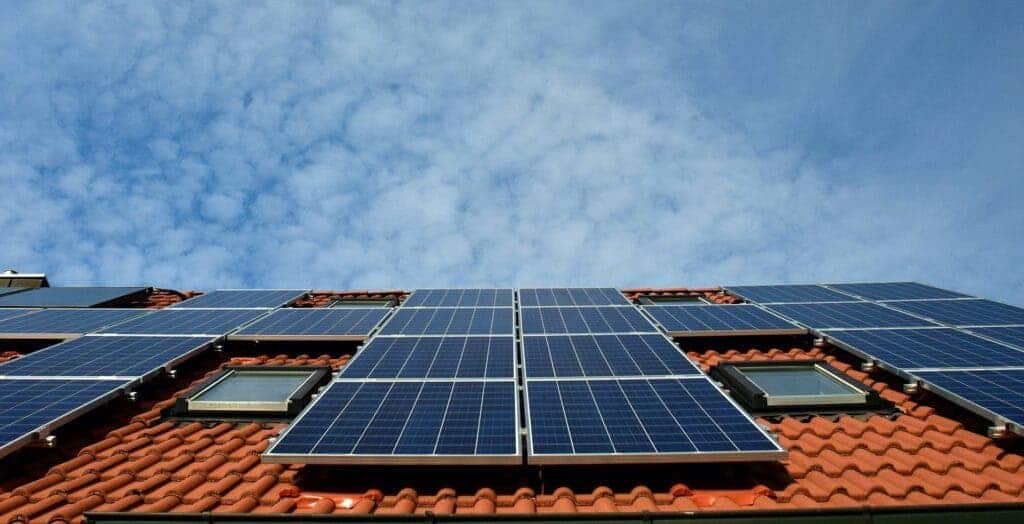Fully-integrating solar panels into buildings could make cities almost self-sustaining, according to new research.

Solar panels get a lot of bad press for having a low energy output; individually, that may be so. A small, single panel will not be able to keep your home lit, warmed, and all the appliances running. But the secret with solar energy is to think at scale, a new paper suggests, and to make the most of every bit of free space. According to the findings, the City of Melbourne could generate 74% of its electricity needs if solar technology was to be integrated into the roofs, walls, and windows of every building.
This study is the first to estimate the viability and impact of integrating several types of solar technology including window-integrated and rooftop-mounted photovoltaics on a city-wide scale. The results are promising, suggesting that the City of Melbourne could greatly reduce its reliance on energy produced through the burning of fossil fuels.
Lighting the way
“By using photovoltaic technology commercially available today and incorporating the expected advances in wall and window-integrated solar technology over the next ten years, we could potentially see our CBD (central business district) on its way to net zero in the coming decades,” said lead author Professor Jacek Jasieniak.
“We began importing coal-fired power from the LaTrobe Valley in the 1920s to stop the practice of burning smog-inducing coal briquettes onsite to power our CBD buildings, and it’s now feasible that over one hundred years later, we could see a full circle moment of Melbourne’s buildings returning to local power generation within the CBD, but using clean, climate-safe technologies that help us meet Australia’s Net Zero 2050 target.”
The authors report that existing rooftop photovoltaic technology alone could dramatically reduce Melbourne’s carbon footprint. If technologies that are still being developed, such as high-efficiency solar windows or facade-integrated panels, are also taken into account, solar energy can become the leading source of energy in the city. These estimates hinge on the assumption that such technologies are integrated on a wide scale across the city.
For the study, the team compared the electrical energy consumption in Melbourne in 2018 to an estimate of the energy that could be produced through wide use of building-integrated solar systems. Consumption figures were obtained from Jemena and CitiPower & Powercor distribution companies through the Centre for New Energy Technologies (C4NET), an independent research body in Victoria, Australia. The production estimates were based on city-wide mathematical modelling.
Out of the total potential energy that solar power could provide, rooftop-mounted solar panels could generate 88%, with wall-integrated and window-integrated solar delivering 8% and 4% respectively. However, wall- and window-mounted solar technologies lost a lot less of their efficiency during the winter months relative to rooftop-mounted panels, the models showed. In other words, although they have a lower total output potential, these two types of technology deliver power more reliably and at more constant levels throughout the year.
Building height had a particular impact only on window-integrated solar technologies; in highrise neighborhoods, its potential rose to around 18% of the total generated energy. In areas with low average building height, the total wall and window areas available are small, reducing their overall potential to generate power. The window-to-wall surface ratio also tends to be greater in commercial buildings compared to residential buildings.
The modeling took into account the impact of shadows cast in the city by elements such as buildings, shading systems, or balconies, and natural factors such as sun incidence angle and total solar potential of different areas across Melbourne. The technologies used as part of the simulations were selected based on their technical characteristics, limitations, and costs of installation and operation.
All in all, the study worked with the 37.4 km2 area of central Melbourne, which consists mainly of residential and commercial buildings. In 2019, a total of 35.1 km2 of the studied perimeter was built floor area. This area was selected because it offered one the greatest potential for window-integrated solar in Melbourne, the team explains.
“Although there’s plenty of policies supporting energy-efficiency standards for new buildings, we’re yet to see a substantial response to ensuring our existing buildings are retrofitted to meet the challenges of climate change,” says co-author Dr. Jenny Zhou. “Our research provides a framework that can help decision-makers move forward with implementing photovoltaic technologies that will reduce our cities’ reliance on damaging fossil fuels.”
“In the near future, market penetration and deployment of high-efficient solar windows can make a substantive contribution towards the carbon footprint mitigation of high-rise developments,” adds first author Dr. Maria Panagiotidou. “As the world transitions towards a net-zero future, these local energy solutions would play a critical role in increasing the propensity of PVs within urban environments.”
The paper “Prospects of photovoltaic rooftops, walls and windows at a city to building scale” has been published in the journal Solar Energy.


